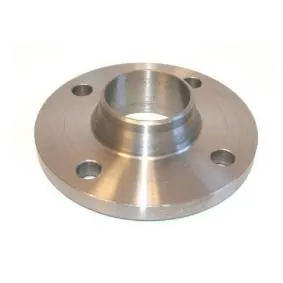-
Cangzhou Yulong Steel Co., Ltd.
-
Phone:
+86 13303177267 -
Email:
admin@ylsteelfittings.com
- English
- Arabic
- Italian
- Spanish
- Portuguese
- German
- kazakh
- Persian
- Greek
- French
- Russian
- Polish
- Thai
- Indonesian
- Vietnamese
- Zulu
- Korean
- Uzbek
- Hindi
- Serbian
- Malay
- Ukrainian
- Gujarati
- Haitian Creole
- hausa
- hawaiian
- Hebrew
- Miao
- Hungarian
- Icelandic
- igbo
- irish
- Japanese
- Javanese
- Kannada
- Khmer
- Rwandese
- Afrikaans
- Albanian
- Amharic
- Armenian
- Azerbaijani
- Basque
- Belarusian
- Bengali
- Bosnian
- Bulgarian
- Catalan
- Cebuano
- China
- China (Taiwan)
- Corsican
- Croatian
- Czech
- Danish
- Esperanto
- Estonian
- Finnish
- Frisian
- Galician
- Georgian
- Kurdish
- Kyrgyz
- Lao
- Latin
- Latvian
- Lithuanian
- Luxembourgish
- Macedonian
- Malgashi
- Malayalam
- Maltese
- Maori
- Marathi
- Mongolian
- Myanmar
- Nepali
- Norwegian
- Norwegian
- Occitan
- Pashto
- Dutch
- Punjabi
- Romanian
- Samoan
- Scottish Gaelic
- Sesotho
- Shona
- Sindhi
- Sinhala
- Slovak
- Slovenian
- Somali
- Sundanese
- Swahili
- Swedish
- Tagalog
- Tajik
- Tamil
- Tatar
- Telugu
- Turkish
- Turkmen
- Urdu
- Uighur
- Welsh
- Bantu
- Yiddish
- Yoruba

Dec . 11, 2024 00:13 Back to list
Exploring EN 1092-1 Understanding Flanges and Their Applications in Various Industries
Understanding EN 1092-1 A Comprehensive Overview
EN 1092-1 is a European standard that sets specifications for circular flanges used in various industrial applications, primarily in pipelines and piping systems. This standard is crucial for ensuring safety, reliability, and compatibility in the assembly of equipment and components in diverse industries, including chemical, petrochemical, and water supply sectors. In this article, we will delve into the details of EN 1092-1, its significance, key specifications, and implications for industry practice.
Background of EN 1092-1
The EN 1092 standard was developed to provide a unified set of guidelines across Europe for the design and manufacturing of flanges. Flanges serve as crucial components in piping systems, allowing for the easy assembly and disassembly of pipes and fittings. With a focus on standardization, EN 1092-1 ensures that different manufacturers can produce compatible products that maintain the integrity and functionality of piping systems.
Beyond just compatibility, the standard addresses various aspects concerning flange construction, such as materials, dimensions, and pressure ratings. The EN 1092-1 classification includes different flange types based on their intended use, which ensures that each flange can withstand the specific conditions it is designed for.
Key Specifications of EN 1092-1
EN 1092-1 specifies several important features, including
1. Flange Types The standard defines multiple types of flanges, including flat, raised face, and blind flanges. Each type serves different purposes in the piping system, and understanding their applications is essential for proper implementation.
2. Materials The standard outlines the materials acceptable for manufacturing flanges, including carbon steel, stainless steel, and other alloys. The choice of material is crucial as it affects the flange’s strength, resistance to corrosion, and overall durability.
en1092 1 01a

3. Dimensions EN 1092-1 stipulates the dimensions of flanges, including their nominal diameters and thicknesses. Flanges must conform to these specified dimensions to ensure a proper fit and adequate mechanical strength.
4. Pressure Ratings Each flange type is rated for specific pressure classes, indicating the maximum pressure it can safely withstand under operational conditions. This is a critical safety feature, as using a flange that is not rated for the pressure it encounters can lead to catastrophic failures.
5. Testing and Quality Assurance The standard also recommends various testing procedures to guarantee the integrity and performance of flanges. This includes pressure testing and dimensional checks to ensure compliance with the stated specifications.
Importance of Compliance
Adhering to EN 1092-1 is not just a matter of regulatory obligation; it also significantly impacts the performance and safety of industrial systems. Compliance reduces the risk of leaks, failures, and breakdowns, which can have dire consequences in terms of safety and financial costs.
In industries where high-pressure and high-temperature conditions are commonplace, using flanges that meet or exceed EN 1092-1 standards is essential. It not only facilitates safe operations but also enhances the longevity of the piping systems, reducing maintenance costs and downtime.
Conclusion
EN 1092-1 serves as an essential standard in the manufacturing and application of flanges across Europe. By establishing clear guidelines regarding materials, dimensions, pressure ratings, and testing, it ensures the reliability and safety of piping systems in various industries. For engineers and manufacturers, understanding and applying this standard is paramount to maintaining high safety standards, achieving operational efficiency, and preventing costly incidents.
As industries continue to evolve with advancing technologies and materials, adherence to such standards becomes even more critical. The continuous push for innovation and improvement in the field of pipeline engineering makes compliance with EN 1092-1 not just a regulatory necessity but a fundamental component of responsible engineering practice.
Latest news
-
ANSI 150P SS304 SO FLANGE
NewsFeb.14,2025
-
ASTM A333GR6 STEEL PIPE
NewsJan.20,2025
-
ANSI B16.5 WELDING NECK FLANGE
NewsJan.15,2026
-
ANSI B16.5 SLIP-ON FLANGE
NewsApr.19,2024
-
SABS 1123 FLANGE
NewsJan.15,2025
-
DIN86044 PLATE FLANGE
NewsApr.19,2024
-
DIN2527 BLIND FLANGE
NewsApr.12,2024
-
JIS B2311 Butt-Welding Fittings LR/SR 45°/90° /180°Seamless/Weld
NewsApr.23,2024











